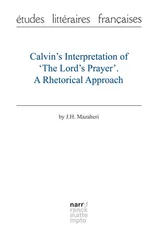Helge Fauskanger - J.R.R. Tolkien’s Lord’s prayer and Hail Mary in Quenya - Syntactical and Etymological Analysis
Здесь есть возможность читать онлайн «Helge Fauskanger - J.R.R. Tolkien’s Lord’s prayer and Hail Mary in Quenya - Syntactical and Etymological Analysis» весь текст электронной книги совершенно бесплатно (целиком полную версию без сокращений). В некоторых случаях можно слушать аудио, скачать через торрент в формате fb2 и присутствует краткое содержание. Жанр: Языкознание, на английском языке. Описание произведения, (предисловие) а так же отзывы посетителей доступны на портале библиотеки ЛибКат.
- Название:J.R.R. Tolkien’s Lord’s prayer and Hail Mary in Quenya: Syntactical and Etymological Analysis
- Автор:
- Жанр:
- Год:неизвестен
- ISBN:нет данных
- Рейтинг книги:5 / 5. Голосов: 1
-
Избранное:Добавить в избранное
- Отзывы:
-
Ваша оценка:
- 100
- 1
- 2
- 3
- 4
- 5
J.R.R. Tolkien’s Lord’s prayer and Hail Mary in Quenya: Syntactical and Etymological Analysis: краткое содержание, описание и аннотация
Предлагаем к чтению аннотацию, описание, краткое содержание или предисловие (зависит от того, что написал сам автор книги «J.R.R. Tolkien’s Lord’s prayer and Hail Mary in Quenya: Syntactical and Etymological Analysis»). Если вы не нашли необходимую информацию о книге — напишите в комментариях, мы постараемся отыскать её.
J.R.R. Tolkien’s Lord’s prayer and Hail Mary in Quenya: Syntactical and Etymological Analysis — читать онлайн бесплатно полную книгу (весь текст) целиком
Ниже представлен текст книги, разбитый по страницам. Система сохранения места последней прочитанной страницы, позволяет с удобством читать онлайн бесплатно книгу «J.R.R. Tolkien’s Lord’s prayer and Hail Mary in Quenya: Syntactical and Etymological Analysis», без необходимости каждый раз заново искать на чём Вы остановились. Поставьте закладку, и сможете в любой момент перейти на страницу, на которой закончили чтение.
Интервал:
Закладка:
áme do [something to] us , ámen do [something] for us : the imperative particle á(q.v.) with pronominal endings, the following verb filling out the phrase and telling us what me( n) is the (in)direct object of. In # ála do not the negation # lahas likewise been directly suffixed to á, and in álamethe same pronominal ending as in ámeoccurs; see # álaabove. – In this text, the accusative pronoun # me us (exclusive) and its dative variant # menonly appear suffixed to this imperative particle and its negated form # ála do not . These pronouns were however attested previously, though in slightly different forms. The dual form of # me, namely met, appears in Namárië: this means * us (two) , referring to Galadriel and Varda (another exclusive form, since Galadriel is not addressing Varda, but is singing about herself and Varda to Frodo, who obviously cannot be included in this "us"). The dative form # men (for) us was almost attested, so to speak, before. It has long been recognized that the word mel-lumnain LR:47, translated us-is-heavy (sc. *"is heavy for/to us"), includes an assimilated form of # men, the dative ending - nturning into lbefore another l(see for instance VT32:8 s.v. *men* -). For another example of assimilation * nl> ll, cf. Númellótë Flower of the West in UT:227; this is transparently númen west + lótë flower . The pronoun # me us is obviously related to the ending - mme we (in firuvamme) and the independent emphatic pronoun emme we .
anta, verb give . This word occurs already in the Qenya Lexicon (QL:31) as well as in some "Qenya" poems from the early thirties (MC:215, 221). However, this is our first attestation of this verb in an actual text that is more or less "mature" Quenya, though in the meantime this word had also appeared in the Etymologies . There it was derived from a stem ana 1- (LR:348), defined to, towards and suggested to be a stemvowel-prefixed form of the prepositional element na 1- of similar meaning (LR:374). The word quoted as the ancestral form of Quenya anta- is anta- to present , give ; this would seem to indicate that this primitive verb was simply unchanged in Quenya. However, since Primitive Quendian short - awas lost at the Common Eldarin stage, we must assume that the oldest form was rather * antâ- with a long final vowel. The primitive verbal ending - tâis well attested, sometimes with a causative meaning (again, see under tulyaregarding primitive tultâ-). Since the meaning of the primitive stem itself has nothing to do with verbs but is prepositional or adverbial, - tâhere literally functions as a verb-former, and the original, basic meaning of * antâ- must be * bring (something) towards (someone else), hence present and then give .
apsene, verb forgive , not previously attested. Apart from making the "external" observation that this verb may echo English absolve , absolution , it is difficult to say anything certain about its intended etymology. The first element may somehow be related to # apa- after (as in Apanónar the After-born , an Elvish name of Mortal Men as the Second-born of Ilúvatar: WJ:387). The semantic relationships must however remain vague, all the more so when the element # senis wholly obscure [13] According to VT43:18, Tolkien derived apsene from sen "let loose, free, let go" supplied with a somewhat obscure prefix aba -, becoming ap - when the syncope brought b into contact with p .
. # Apsen- forgive would most likely behave as a "basic" verb or consonant stem, so that the "uninflected stem" (here used in an infinitival sense) is apsenefor older * apseni. According to the system Tolkien used elsewhere, this would become apseni- when any ending is added. However, in the text before us we also have the suffixed variant apsenet, not as we might expect * apsenit. It seems that when writing this text, Tolkien’s evolution of his languages was in a "phase" where the variation - evs. - i- did not take place, though he had used this system before and later returned to it; see carefor a fuller discussion of this peculiarity. – The ending - tseen in apsenetis apparently the same pronominal suffix - t them as in laituvalmet we shall praise them in the Cormallen Praise. The whole phrase emme apsenetthus means we forgive them – sc. other people’s sins/trespasses, not the offenders themselves, for they are apparently denoted by the dative pronoun tieninstead: As we argued above, the direct object (accusative object) of # apsen- forgive is the matter that is forgiven, while the indirect object (dative object) is the person(s) forgiven. The object ending - t them may be a shortened and suffixed form of the independent accusative pronoun te them , concerning which see tien. It may also be related to the pronominal ending - nte they (UT:317 cf. 305), which could be a nasal-infixed version of - t.
ar, conjunction and , well known from Namárië and other sources. The Silmarillion Appendix, entry ar-, defines this element as beside , outside and adds that this is the origin of "Quenya ar and , Sindarin a ". A similar explanation is given in the Etymologies (LR:349 s.v. ar 2-), and this may well be Christopher Tolkien’s source in this case. However, this entry in Etym. says nothing about the Sindarin (or Noldorin) conjunction; only Quenya aris mentioned. Normally, we would expect a simple stem ar to become arboth in Quenya and Sindarin, not ain the latter. Indeed the Sindarin of the King’s Letter has arinstead of aas the conjunction and (SD:128-129); however, ais found in LotR (the Cormallen Praise includes the words Daur a Berhael Frodo and Sam ). The King’s Letter, showing arinstead of a, was never published during Tolkien’s lifetime, so he would not be "bound" by it. Besides the aof the Cormallen Praise, a later source also has ah; MR:304 gives Finrod ah Andrethfor Finrod and Andreth . This reproduces a post-LotR source, so this ahTolkien must have intended to be "compatible" with ain the already published LotR: It would seem that amanifests as ahwhen the next word begins in a vowel, or at least in a-. These examples from Sindarin seem to suggest that Tolkien now imagined the primitive stem yielding the conjunction to be *as rather than ar, for while the latter should have yielded arboth in Quenya and Sindarin, the former can indeed produce Quenya (* az>) arand Sindarin awith a side-form ahthat is used before vowels. Compare the stem os- round , about producing Noldorin/Sindarin o about , concerning , with " h before vowel, as o Hedhil concerning Elves [ Edhil ]" (LR:379). The hthat turns up before vowels is a remnant of the sthat the original stem ended in. Same for Sindarin ah and from *as: when the next word began in a consonant, hwas almost inaudible and disappeared (* ah Berhael> a Berhael), but before a vowel it survived. The text before us provides new possible evidence supporting the notion that in the post-LotR period, the conjunction and is to be derived from a stem *as rather than ar: The preposition as with , here attested for the first time, could plausibly be related to the word for and . See asfor further discussion. Aras the Sindarin word for and in the King’s Letter may reflect the earlier concept of the stem being ar – evidently rejected shortly after the Letter was written, but before LotR was published.
Читать дальшеИнтервал:
Закладка:
Похожие книги на «J.R.R. Tolkien’s Lord’s prayer and Hail Mary in Quenya: Syntactical and Etymological Analysis»
Представляем Вашему вниманию похожие книги на «J.R.R. Tolkien’s Lord’s prayer and Hail Mary in Quenya: Syntactical and Etymological Analysis» списком для выбора. Мы отобрали схожую по названию и смыслу литературу в надежде предоставить читателям больше вариантов отыскать новые, интересные, ещё непрочитанные произведения.
Обсуждение, отзывы о книге «J.R.R. Tolkien’s Lord’s prayer and Hail Mary in Quenya: Syntactical and Etymological Analysis» и просто собственные мнения читателей. Оставьте ваши комментарии, напишите, что Вы думаете о произведении, его смысле или главных героях. Укажите что конкретно понравилось, а что нет, и почему Вы так считаете.












